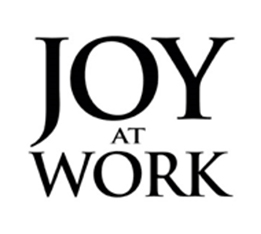RESOURCES
Discover how you can bring Joy at Work to your business, non-profit, government or church by using the following resources:
Leadership Resources
Video Seminar
The Joy at Work Video Seminar on DVD is a must for any leader who wants to bring principles, purpose, and fun to the workplace. In four inspiring lectures, you’ll experience Dennis Bakke’s passion for transforming organizations, where every person—from custodian to CEO—has the power to use his or her talents free of needless bureaucracy. Filmed before a live audience, the following lectures will challenge everything you thought you
knew about business.
- Purpose Matters
- Assumptions About People
- The Advice Process
- The New Role of Leadership
Running time 3 hours; includes bonus footage.
The video is an excellent training resource for any business or non-profit.
Church Resources
Bible Study
The Joy at Work Bible Study Companion and DVD provides the biblical map that Dennis Bakke used as he charted and led his journey as co-founder and CEO of AES. Using the examples of Dennis Bakke and AES, this 10-week Bible study sets out to examine what the Bible says about the purpose of business and fun on the job. Starting with the Genesis story of creation and moving through Revelation, this Bible study supplements Joy at Work with:
- Biblical readings that unveil the principles behind each chapter in the AES story
- Synthesis of theological principles
- Reflective questions to prepare readers for small group discussion
- Guidelines for immediate and long-term application for business leaders at all levels of corporations
Academic Resources
Power Trip
Emmy award-winner Paul Devlin captures the principles of Joy at Work in his internationally acclaimed documentary, Power Trip. It’s the amazing story of how AES tries to transform the dysfunctional electricity-distribution system in Tbilisi, capital of the former Soviet Republic of Georgia. Struggling against corruption, assassination, and street rioting, AES manager Piers Lewis must persuade the Georgians to pay for, rather than steal, electricity. This “compelling and passionate tale of a country rebuilding itself” (Hollywood Reporter) has “suspense, comedy, and some colorful characters” (Variety) and develops into an “increasingly absurdist standoff between Communist-inspired cynicism and tenacious capitalist zeal” (New York Daily News).
Power Trip Movie Site
Harvard Business School Case Studies
Human Resources at the AES Corp.:
The Case of the Missing Department
Jeffery Pfeffer; Feb 1, 1997; 28p
AES develops and operates electric power plants all over the world, and, by late 1996, has approximately 20,000 employees. But the corporation has no human-resources staff, neither at corporate headquarters in Arlington, VA, nor in any of its operating facilities. In fact, the company has very little centralized staff at all—almost no strategic planning, no environmental department, and almost no legal staff. The question is: Should the company continue to operate in this same way as it continues to expand and geographically diversify? And how had the organization been so successful without specialized expertise?
AES Global Values
Lynn Sharp Paine; May 18, 1999; 19p
Members of the development team for the AES Corp.’s power-plant project in India must decide which technology to specify in their application for techno-economic clearance from the Indian government’s Central Electric Authority. Their choice is between expensive technology that would meet more-demanding U.S. environmental standards and less-costly technology that would meet local environmental standards and free up funds to contribute to the other needs of the communities surrounding the new plant.
AES Honeycomb
Lynn Sharp Paine and Sarah Mavrinac; Dec 9, 1994; 29p
Senior managers of the AES Corp. must decide whether to drop the company’s emphasis on corporate values and revamp organizational controls, as advised by investment analysts and outside counsel. The company is recovering from an incident of environmental fraud at one of its plants where an innovative decentralized “honeycomb” structure has been put in place. Some believe the structure is too decentralized and that lack of controls contributed to the incident. This case study illustrates an aspirations-driven approach to organizational integrity and shows the interdependence of values and organizational structure. It invites discussion about the relationship of values, organizational performance, and shareholder gain.
AES: Hungarian Project (A)
Lynn Sharp Paine and Ann Leamon; March 15, 2000; 25p
The AES Corp. has put out a request for bids to build a new power plant in Hungary. Just after the closing date for submitting bids, one of the contractors calls to request an opportunity to “improve” its bid. Although AES has not yet completed its analysis, this contractor appears to be the low bidder. What should the coordinator do? The decision is one of several faced by AES as it attempts to do business in post-socialist Hungary. This case study explores how AES implements its values and ethical standards in a post-Communist context, including its distinctive approach to downsizing the workforce at the power plants it purchases.
Harvard Business Review Interview
Organizing for Empowerment:
An Interview with AES’s Roger Sant and Dennis Bakke
Jan 1, 1999; 14p
In this interview with HBR Senior Editor Suzy Wetlaufer, AES Chairman Roger Sant and CEO Dennis Bakke reflect on their trials and triumphs in creating an exceptional company. When they founded AES in 1981, Sant and Bakke set out to create an employee-run company where people could have engaging experiences on a daily basis—a company that embodied the principles of fairness, integrity, social responsibility, and fun.



